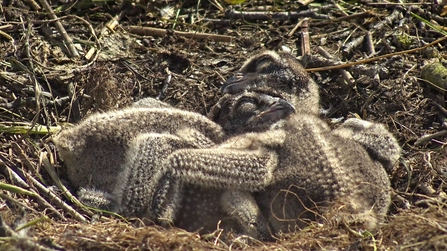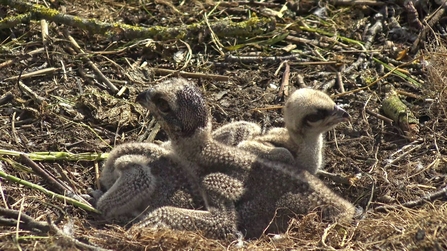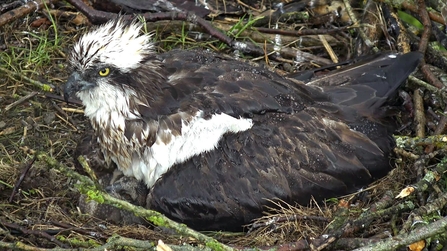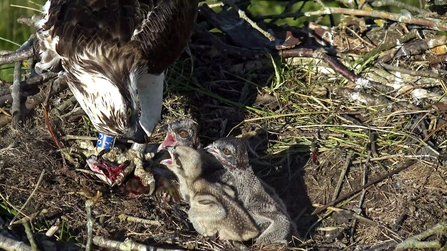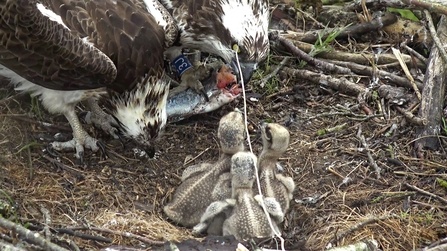As the Bobs enter their second week we are starting to see some new behaviours as the dynamics of this growing family develop.
Growth Rates
Today the Bobs are 12, 11 and 9 days old. They are growing rapidly and changing daily. Monty is continuing to provide a steady supply of fish and Telyn is feeding all three chicks efficiently and with precision. It will take around 35 days for each chick to reach full size and to weigh in at 1400g – 1700g.
A newly hatched osprey chick weighs between 50g – 60g, they double their hatching weight in the first week of feeding, then need to gain around 40g a day to reach their full size. Their protein-packed diet helps them to grow quickly.
Contented Bobs take a snooze
